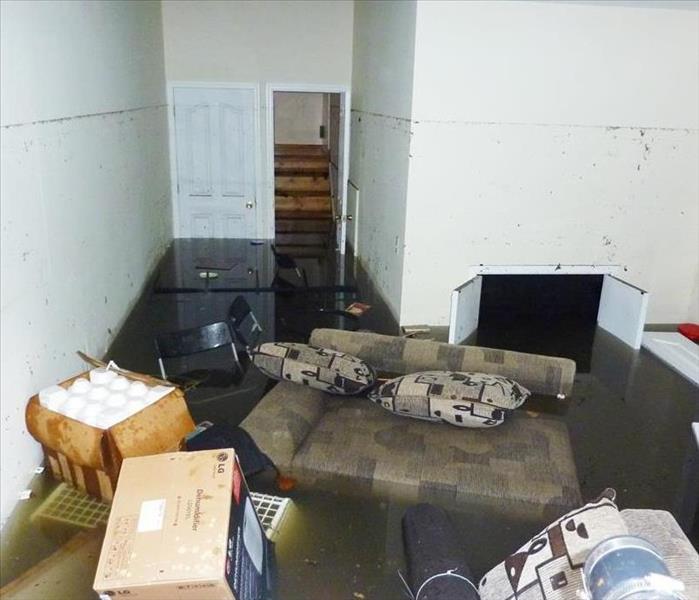How To Prevent Your Basement From Flooding and What To Do if It Does
1/20/2022 (Permalink)
 Consider these tips to better handle a Basement Flood in your Bath, NC house. If any doubt arises, please contact us.
Consider these tips to better handle a Basement Flood in your Bath, NC house. If any doubt arises, please contact us.
Discovering standing water in your Bath, NC basement can be quite a shock, especially if you had no clue that there was a risk. Several things can cause a basement flood, including heavy rainfall, a burst water pipe, an overflowing toilet, or a leaking water heater. It's helpful to have the right equipment on hand and know how to resolve the situation before a disaster happens.
This can save a lot of valuable time, and time means everything when it comes to water damage; every minute counts.
There are ways to lower the risk of a flooded basement, such as installing a sump pump and/or trash pump, making sure your plumbing is in good working order and landscaping your yard to avoid water pooling around the house.
Unfortunately, there are no guaranteed prevention strategies.
How Should I Handle a Basement Flood?
1. Shut Off the Electricity
Before you step foot into the area, shut off the electricity. Electric currents can travel through standing water, making it hazardous to step into. If you can't safely navigate to the breaker box, call the power company or an electrician to turn it off.
2. Let Fresh Air In
If the outdoor air is less humid than the indoor air, open the windows and doors and let the fresh air in to begin the drying process.
3. Extract Standing Water
Then, you'll need to extract the standing water as soon as safely possible. Using a wet/dry vacuum is the best way to safely and effectively do this. Hiring a water damage restoration company could be the best option depending on the amount of water. These companies have industrial-grade pumps and other professional equipment to deal with the water and debris.
4. Remove Everything
Next, it's essential to remove Everything from the affected area. Unfortunately, if you have carpet, you'll need to remove it and throw it out, along with padding; it won't be salvageable. You will probably also have to tear out and replace some parts of your drywall. All the contents will need to be removed to begin drying. This removal will also make room for a thorough cleanup.
5. Circulate the Air
Now, you can begin the drying process. Running fans and dehumidifiers can be a good start. You can also run portable heaters (just don't leave these unattended).
6. Clean, Sanitize and Dry Everything
Before moving everything back indoors, it's essential to thoroughly clean and sanitize the area and all salvageable contents. Then, you must make sure Everything is dry. Mold can begin growing within 24 hours if dampness remains. A mold infestation can increase the problem significantly.
Hopefully, you can avoid a significant water intrusion for as long as you remain in your home. However, now you know the risks, prevention tactics, and restoration techniques to be prepared for anything.
Knowing about home flooding and having the proper cleanup equipment ahead of time can help keep your home and family safe and potentially save you a lot of money required to return your home to its previous condition. Take these tips today to gain more peace of mind that your home and family will remain secure.






 24/7 Emergency Service
24/7 Emergency Service